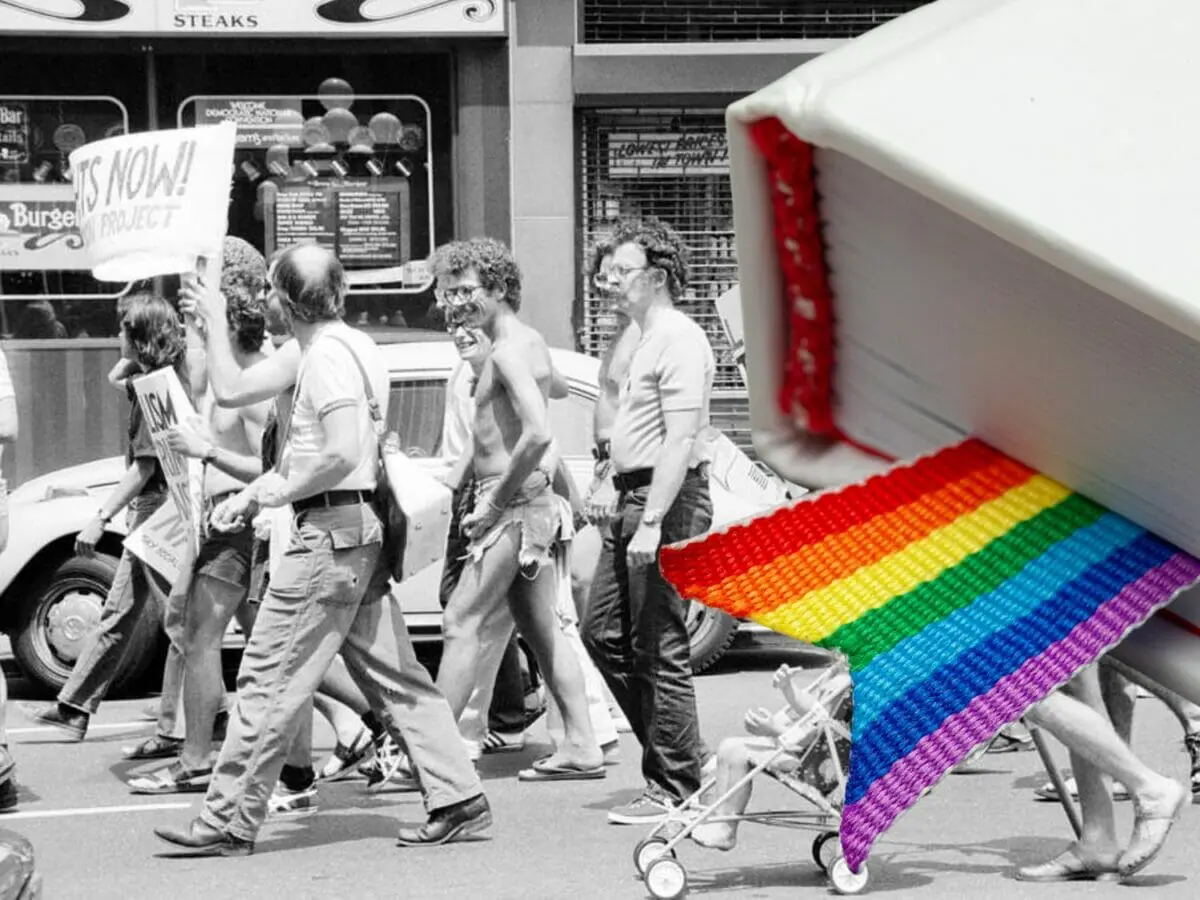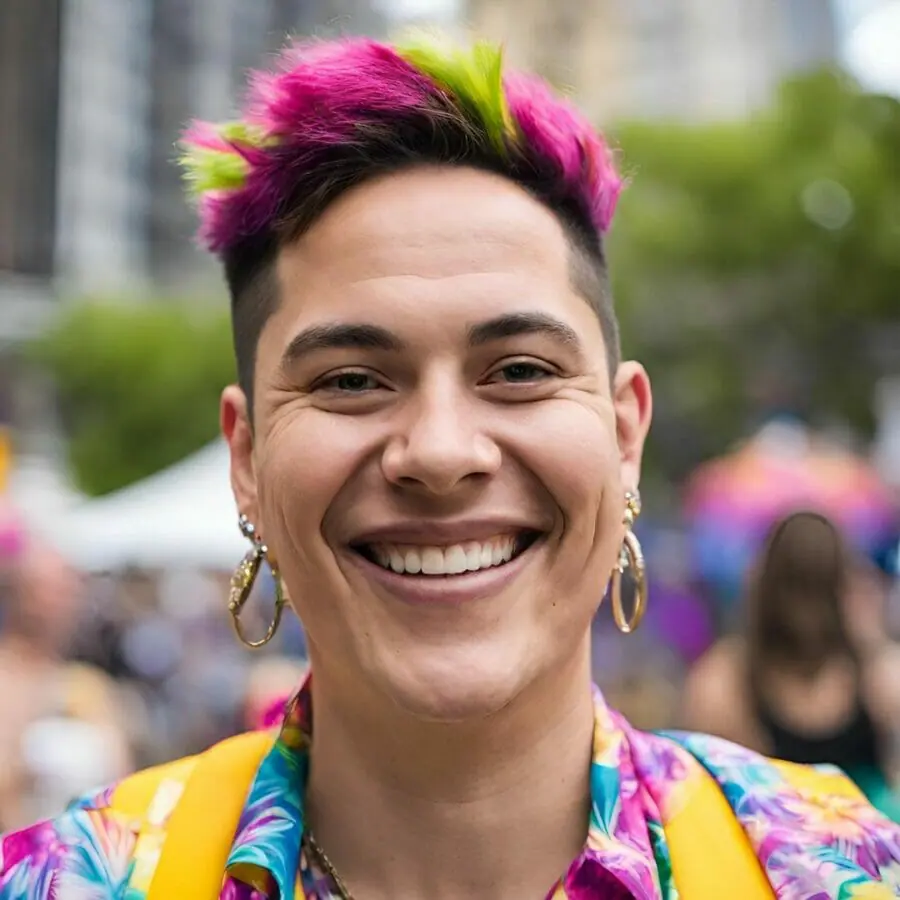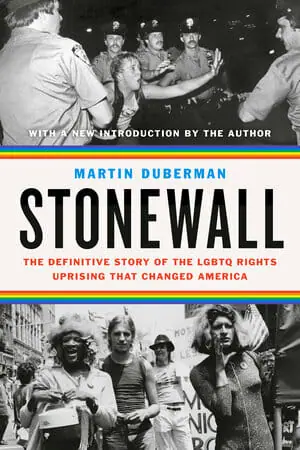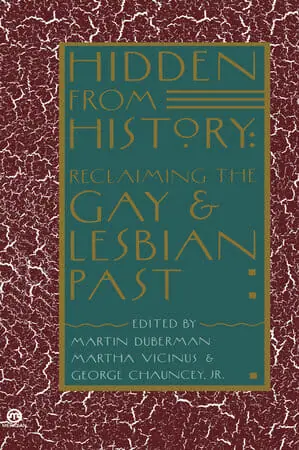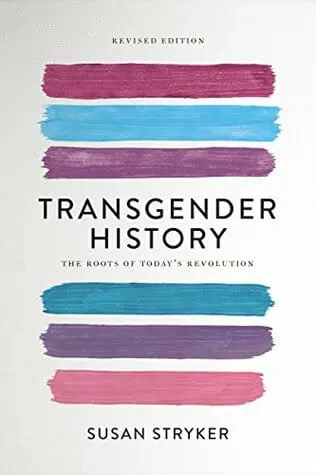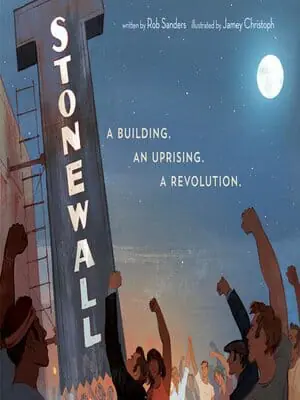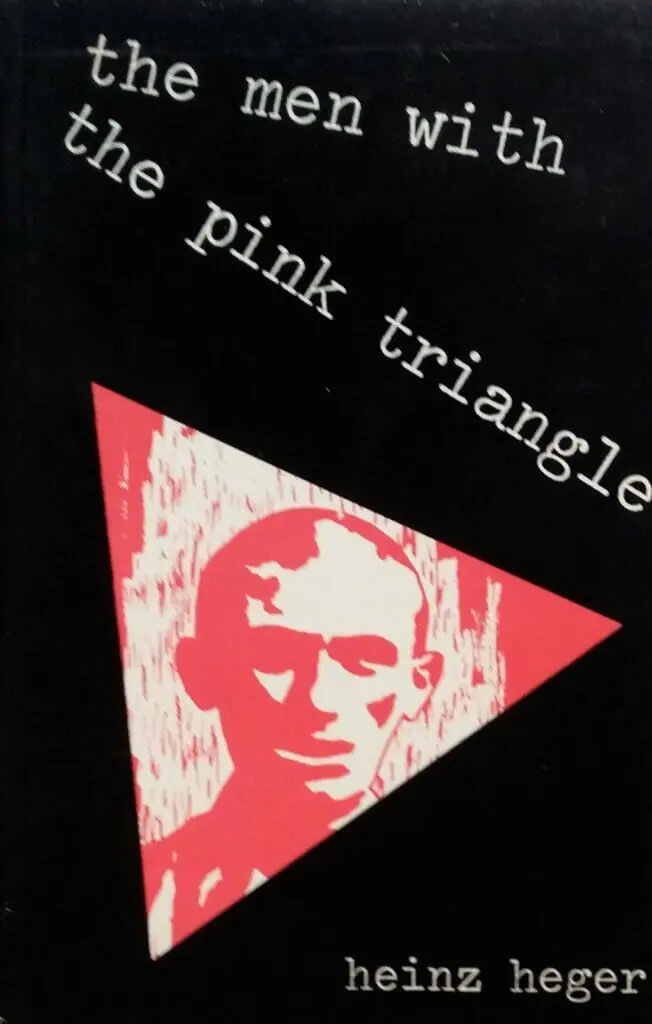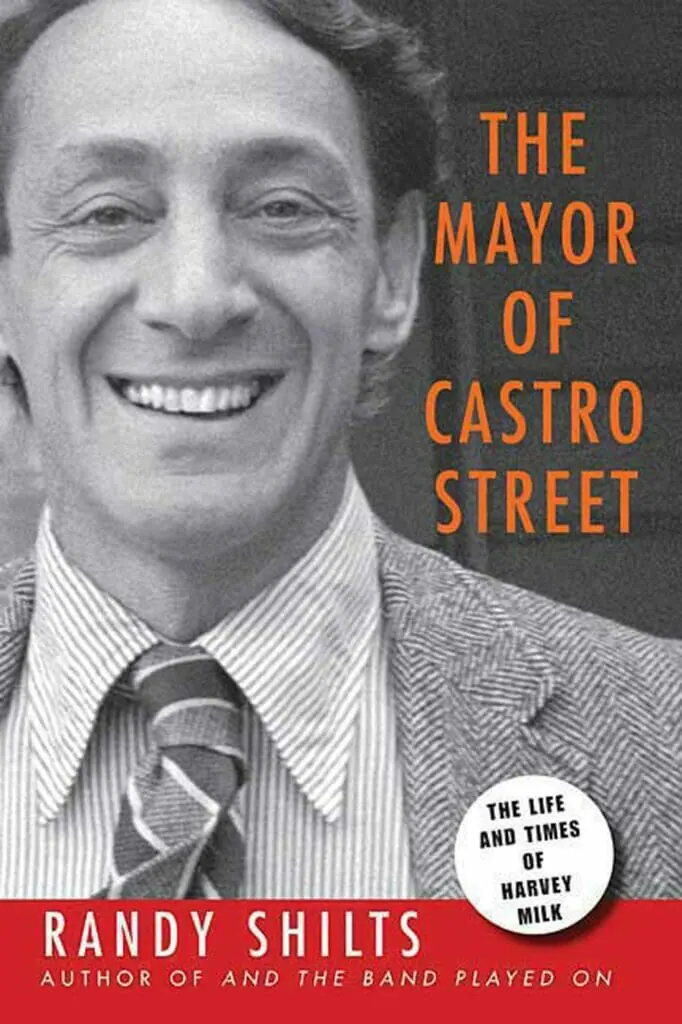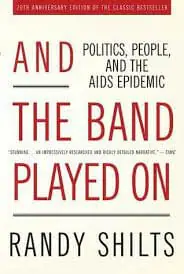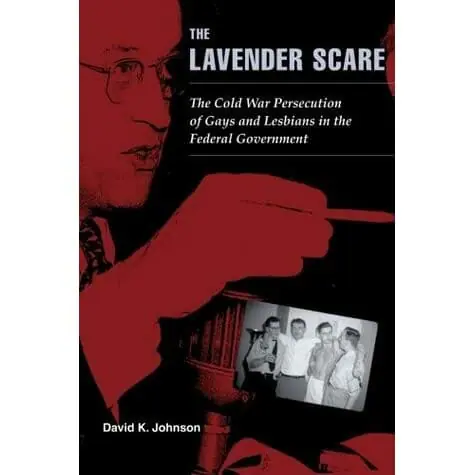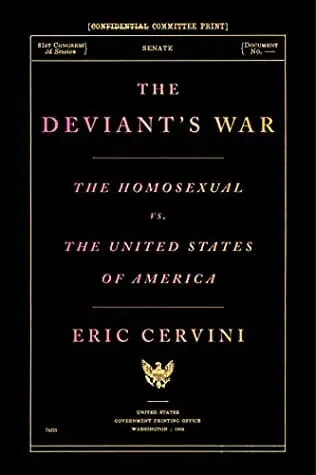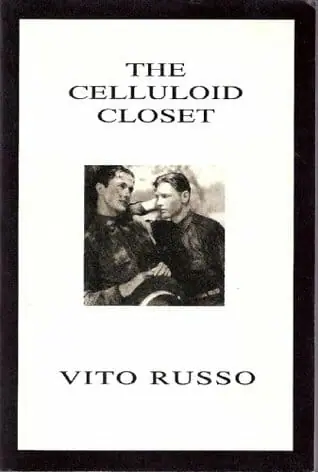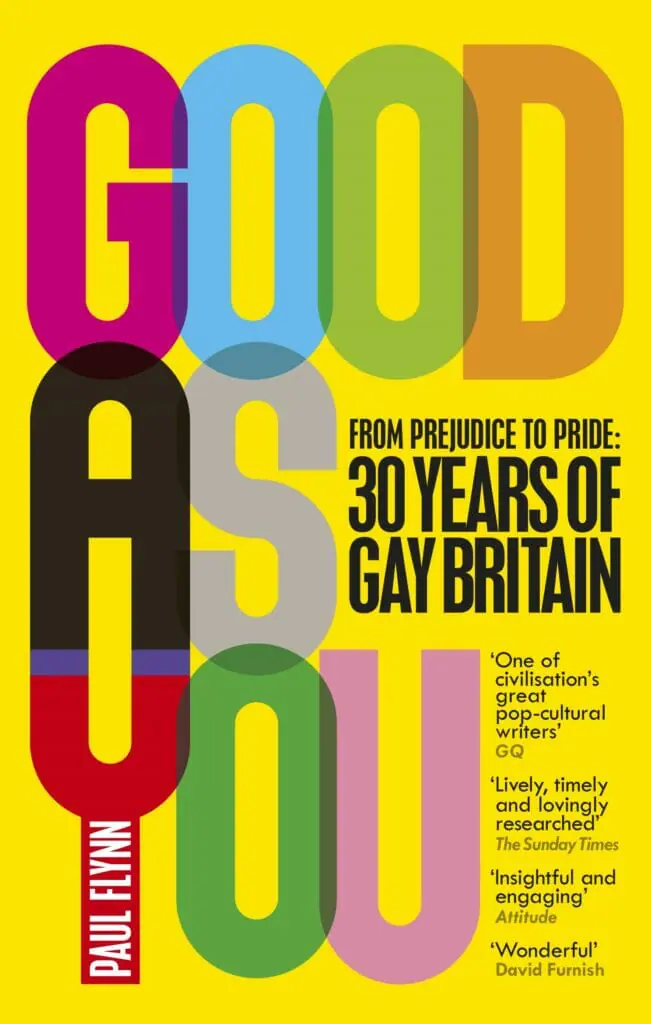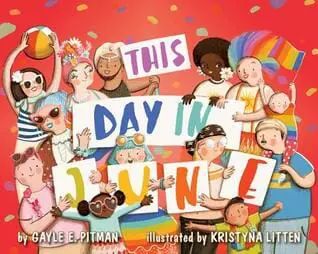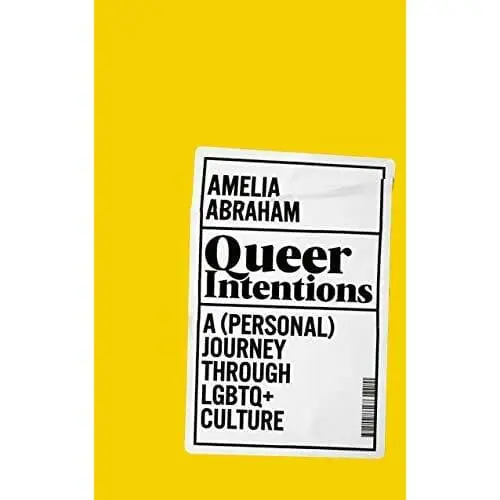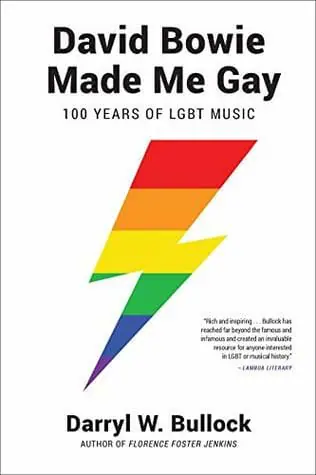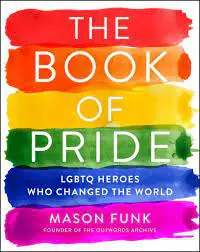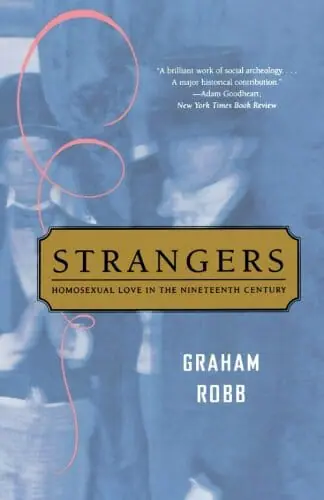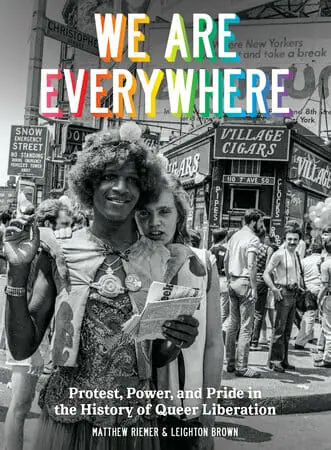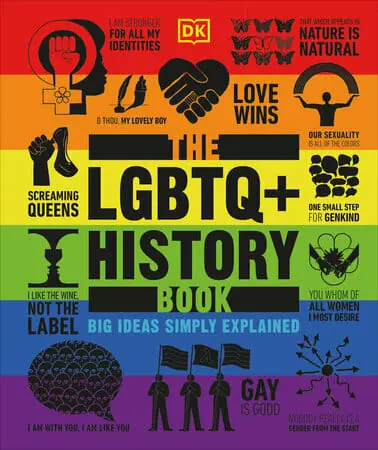We all remember the first few books we read, influencing our feelings. It is a magical experience that can take many forms – an escape into a magical world of fantasy, a window back into the past, or a moment of inner peace. Many of us wish we could go back and read those works for the first time to experience those emotions again.
Sometimes, however, a book is more than that, and their emotions come not just from captivating writing but from actual events and tangible struggles. And this is the case with the best LGBT history books.
Utilized as one of mankind’s most powerful tools for thousands of years, the written word can be a vessel for many things: dedication, conviction and even – in the case of what we’ll be diving into today – a way to express the challenges and triumphs of a specific community through the years behind us.
The LGBTQIA+ community, its allies, and all who identify with it.
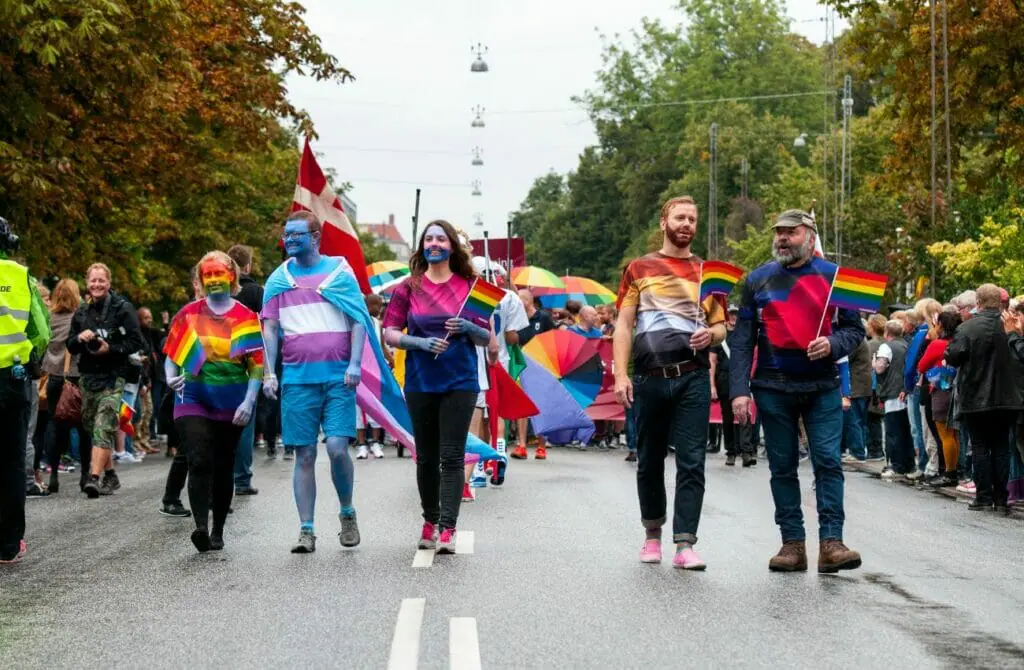
Famous for its influence upon and flirtation with the unconventional, revolutionary, and inspirational, the LGBTQIA+ community constantly proves itself as an achiever of the improbable and impossible. Grounded and characterized by a strong value for self-expression and freedom, it is no surprise that the queer community and its allies have produced more than their fair share of literary gems.
While one could not ever hope to contain everything that those identifying as LGBTQIA+ have experienced, overcome, and achieved into one single length of writing, a great many talented authors have done their best to capture specific moments or aspects of queer culture – and therefore contributed to the wealth of LGBT history books available to us today.
LGBTQIA+ issues have never been closer to the surface of politics and debate than they are now, but with that visibility comes great tension – ideological and political opposition that results in all manner of effects, from changing cultural bias to acts of hate and even violence.
However, amidst all that chaos and conflict and when contemplating the impossibility of what is yet to be achieved, it is incredibly important that we glance over our shoulders to see just how far the LGBTQIA+ community has come. Whenever things seem hopeless, and bloody-minded stubbornness is the trend of the times, one must only look.
So come with us and indulge your senses in that colorful, ever-shifting past. Embark upon a multi-faceted, rollercoaster journey through ten of the best LGBT history books ever published!
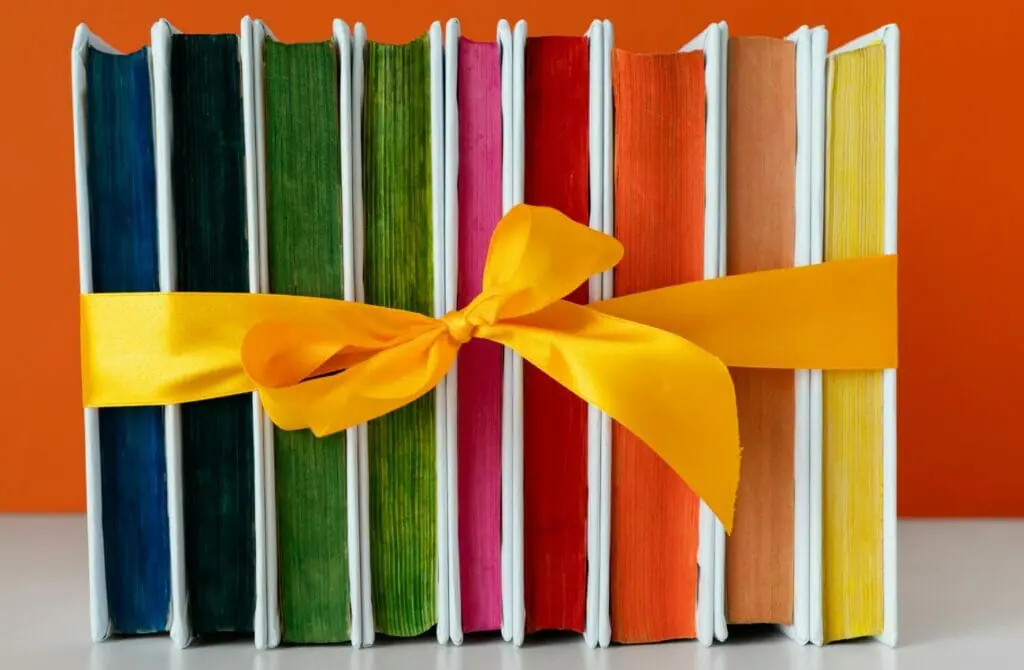
Don't have time to read them all? Why not try listening to them? Audible is a great platform for listening to audiobooks because it offers a wide selection of books, including bestsellers and exclusive content. With Audible, you can listen to your favorite books on-the-go, whether you're commuting, working out, or doing household chores.
The Audible app also has features like adjustable narration speed, a sleep timer, and the ability to create bookmarks, making it easy to customize your listening experience. Additionally, Audible offers a membership program that gives members access to a certain number of audiobooks per month, making it a cost-effective option for avid listeners.
A great resource for people who want to maximize their time and make the most out of their daily activities. Try a free 30-day trial from Audible today, and you'll get access to a selection of Audible Originals and audiobooks, along with a credit to purchase any title in their premium selection, regardless of price (including many of the books on this list!)
For ebook lovers, we also recommend Scribd, basically the Netflix for Books and the best and most convenient subscription for online reading. While they have a catalog comprising over half a million books including from many bestselling authors, for some of the books on this list, you'll still have to purchase individually - either as a paperback or eBook to load on your Kindle - due to publishing house restrictions.
So we are taking off our masks, are we, and keeping
our mouths shut? as if we’d been pierced by a glance!
The song of an old cow is not more full of judgment
than the vapors which escape one’s soul when one is sick;
so I pull the shadows around me like a puff
and crinkle my eyes as if at the most exquisite moment
of a very long opera, and then we are off!
without reproach and without hope that our delicate feet
will touch the earth again, let alone “very soon.”
It is the law of my own voice I shall investigate.
From Frank O’Hara’s ‘Homosexuality’
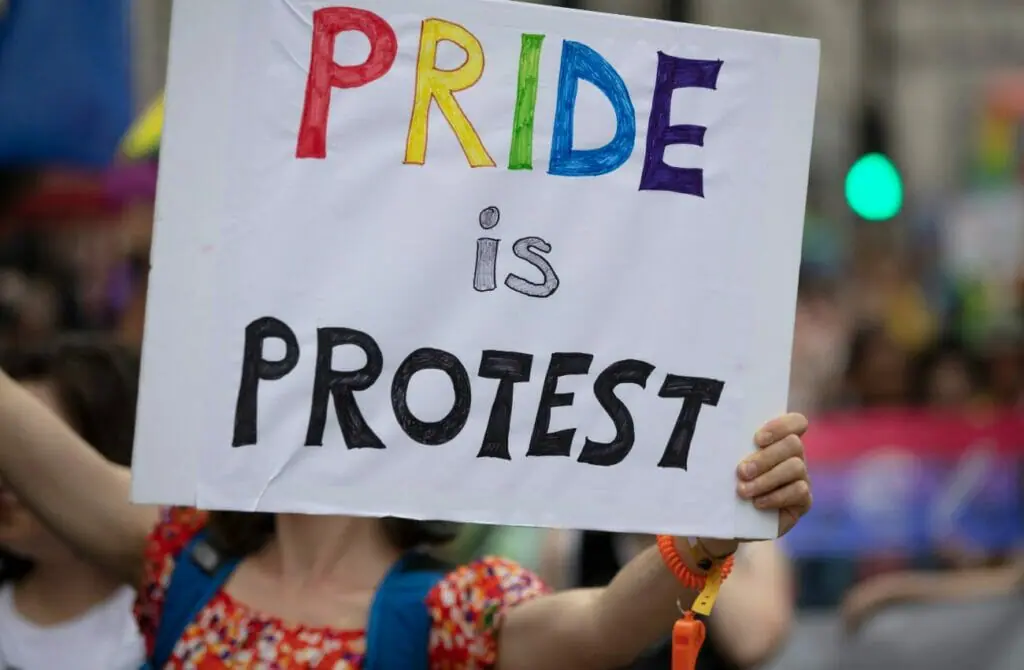
In this article we will cover...
- Stonewall by Martin B. Duberman (1993)
- Hidden From History by Martin B Duberman (1990)
- Transgender History by Susan Stryker (2008, revised 2017)
- Stonewall: A Building. An Uprising. A Revolution by Rob Sanders (2019)
- The Men With The Pink Triangle by Heinz Heger (1972)
- The Mayor of Castro Street by Randy Shilts (1982)
- A Queer History of the United States by Michael Bronski (2011)
- And the Band Played On by Randy Shilts (1987)
- The Lavender Scare by David K. Johnson (2004)
- The Deviant’s War by Eric Cervini (2020)
- The Celluloid Closet: Homosexuality in the Movies by Vito Russo (1987)
- Good As You by Paul Flynn (2017)
- This Day in June by Gayle E. Pitman and Kristyna Litten (2014)
- Coming Out Under Fire by Allan Bérubé (2010)
- Queer Intentions by Amelia Abraham (2019)
- David Bowie Made Me Gay by Darryl W. Bullock (2017)
- The Book of Pride by Mason Funk (2019)
- Strangers by Graham Robb (2005)
- We Are Everywhere by Leighton Brown and Matthew Riemer (2019)
- The LGBTQ+ History Book (distributed) by DK (2023)
Stonewall by Martin B. Duberman (1993)
When looking to introduce the topic of LGBTQIA+ history, whether in modern times or when reflecting upon the past, it’s hard to get very far without encountering Stonewall.
The name itself does not belong to just a book, however. The ‘Stonewall Riots’, also known as simply ‘Stonewall’, were a series of LGBTQIA+ rights protests in response to the police raid of the Stonewall Inn in Manhattan, and proved to have a transforming effect upon LGBTQIA+ activism in the United States and the world as a whole. The Stonewall Riots led to the first gay pride marches and the first LGBTQIA+ protection alliances and paved the road for future legislative changes en masse.
Now for the novel itself. As the title might suggest, the book is Duberman’s take on a definitive history of the 1969 uprising, and to achieve this, he examines the lives and perspectives of six gay and lesbian people deeply involved in the movement behind it.
By doing this, he shows the Stonewall Riots as the historical beacon of inspiration that it deserves to be – showcasing the braveness, the boldness, and the wildness that allowed them to happen and powered one of the most influential moments in LGBTQIA+ history.
Reviewers hold ‘Stonewall’ in high regard – remarking upon its comprehensiveness and stirring evocation of such a pivotal moment. As far as readability goes, one can be beyond assured that it is an engaging and thrilling page-turner and – just like the protests that inspired it – not something to miss.
Hidden From History by Martin B Duberman (1990)
We spoke of the need to uncover queer history earlier, and here’s where the exploration truly starts. Hidden From History – Reclaiming the Gay & Lesbian Past is detailed, attentive, caring, and revolutionary – but even then remains an admitted drop in the sea that is the dynamic, persistent presence of gay culture and queerness throughout human history.
As much as those of persecuted races seek to reclaim their culture and rebuild the past from the aftermath of colonization or oppression, the same is true within the pages of Hidden From History for those identifying as queer. For, as the book describes, ‘gayness’ is no modern phenomenon, nor can it in any way be perceived as fundamentally ‘un-normal’ – it comes from everywhere and exists within everyone.
Taking an active, energetic approach, Duberman and the other editors responsible for the book (Martha Vicinus and George Chauncey) use the pages of Hidden From History to venture from Victorian London to ancient Japan and China, taking off the veil created by such long erasure, and showcasing the striking presence and validity of queer influences in our past.
Described as ‘A landmark of a book and a landmark of ideas that will shatter ignorance and delusion’ by Professor Catharine Stimpson of the Graduate School of Arts and Science, New York University, Hidden From History is sure to be a thrilling and revealing read regardless whether you’re queer, an ally, or simply curious of the unknown and hidden, untold corners of history.
Transgender History by Susan Stryker (2008, revised 2017)
Transgender History is a concise and comprehensive (plus relatively recent on behalf of the second edition!) subject study with a sterling response from critics. Readers go as far as to label it beyond engaging and positively pivotal in understanding the journey of transgender rights.
While much of the media and public focus when it comes to LGBTQIA+ issues gather around those identifying as gay and lesbian (though less so in more recent years), it remains to be said that one must not ever forget the unique yet parallel struggles faced by transgender and other non-cisgender individuals.
Transgender History provides a more-or-less concise record of modern transgender history, ranging from the mid-19th century to the 2000s. Beginning with an open and scientific overview of key concepts and terminology relevant to the topic, the book then goes on to analyze modern media coverage of transgender issues and describe current efforts to better acceptance and access to relevant health care.
Author and artist Carrie Schmidt – tasked with reviewing Transgender History for the peer-reviewed academic journal Archivaria – dubbed the book a “well-researched, highly detailed, yet inherently complicated recounting of the history of the transgender movement in the United States.”.
As mentioned earlier, the book was also given an updated second edition in 2017 to incorporate new milestones in the fight for LGBTQIA+ and Trans rights. This keeps it in the league with the rest of the LGBTQIA+ books mentioned here and solidifies its position as a well-composed, engaging account of gay and transgender history!
Stonewall: A Building. An Uprising. A Revolution by Rob Sanders (2019)
Stonewall. The beginning of the (modern) fight for gay rights and equality is a perfect place to start this list – just as this illustration-rich reframing of the famous Stonewall Riots is a perfect fit for the almost-start of the educational process – early primary.
While remaining unbiased is crucial in broaching new subjects in children’s literature – as it is in any form of education and when it comes to absolutely any subject – this book captures the essence of why being an accepting, open person is important exceptionally well without erasing or compromising the moral of the actual event.
Accessible for younger minds without being watered-down or taking credit away from where it is due, Sanders captures the inspirational nature of the event and the progress it allowed perfectly – ensuring that every group and brave face that enabled such an amazing moment in history to take place sees a showcase and representation.
Stonewall: A Building. An Uprising. A Revolution doesn’t just address gay rights issues but also the political tensions and passionate buildup of the motivation behind the riot and protests in general, allowing for a kid-friendly yet highly intuitive introduction to real-life issues no matter where and how they might present themselves.
Children’s books that are set up to leave a lasting positive impact without coming across as overpowering, being somewhat censored or rewritten for children, or bearing bias are somewhat rare, and that is exactly what makes this book a wonderful choice for both young and old.
The Men With The Pink Triangle by Heinz Heger (1972)
Though the number of living survivors continues to dwindle, the value of the many lessons to be learned from Holocaust-related media neglects to follow – instead, the contrary becomes more true with every passing day.
While most have heard of The Boy in Striped Pajamas, ignoring the wide range of other, equally important works – each telling a new aspect and a new angle on one of our time’s darkest moments – would be a crime.
That is where The Men with the Pink Triangle comes in – a detailed, grounded work that grapples hand-to-hand with the ghosts of the past and their vivid repercussions upon the present and future.
Setting the stage of cruelty and dark history in this gripping first-person account, Heger explores one of the most unexplored horrors perpetuated by the Nazi regime and its collaborators through the lens of his experiences as a condemned homosexual in an East German concentration camp.
Though many accounts of the pain and suffering of that period for many may be lost to history, one can remain assured that The Men with the Pink Triangle’s day-to-day narrative and emotional prose provide a brave effort to convey the flood of darkness that consists in the Holocaust’s shadow.
A fascinating read for history buffs and LGBTQIA+ individuals/allies alike, The Men with the Pink Triangle is a tale unlike no other – a real tale of real suffering, sure to make us all appreciate even the imperfect state of our own time.
The Mayor of Castro Street by Randy Shilts (1982)
The Mayor of Castro Street: The Life and Times of Harvey Milk covers the life and times of San Francisco city supervisor Harvey Milk – from his early career, status as the first ever openly gay American elected politician, and then assassination at the hands of disgruntled adversary Dan White on the 27th November 1978.
Positively full to the brim with tragedy, passion, riots, and intrigue – this is no coffee-table warmer.
Since, and thanks in part to the author – legendary San Francisco Chronicle journalist Shilts, who was a hero in his own right – Milk’s legacy has become a source of great inspiration for the gay community, and that strong spirit is captured perfectly within the pages of The Mayor of Castro Street.
Held as ‘A symbol of what gays can accomplish and the dangers they face in doing so’ upon his induction into Time’s ‘100 Heroes and Icons of the 20th Century’, this book about Milk and the story behind it has inspired a movie (Milk, 2008), a documentary (The Times of Harvey Milk, 1984) and an opera (Harvey Milk), which is not to mention the phenomenal footprint of his name and legacy upon gay rights organizations and programs all across the world.
A thrilling, captivating story featuring true, incredibly influential events, The Mayor of Castro Street is almost a novel in non-fiction, bibliographical form. Meet the Mayor himself, take a step inside his shoes, and explore the life of the brave, unintentional martyr that would be.
A Queer History of the United States by Michael Bronski (2011)
Setting out to get the job done well and to do it properly, A Queer History of the United States draws upon a vast, truly impressive variety of other literature, activist paraphernalia, private documents and news clippings to build a written picture of each period it covers.
But the book isn’t all lectures, dates, and information. Bronski approaches the topic with wit and smarts in hand – taking such a scholarly yet culturally grounded approach to the development of LGBTQIA+ rights in the US that when reading his work, one could almost imagine themselves living in the times being described.
The book doesn’t just start with Stonewall and end with the legal allowance of gay marriage, however. It starts its positively inspirational journey of discovery as long as 500 years in the past – exploring how deeply queerness is interwoven and present in early American culture and how that history reflects on the deeply complex country we know today.
Insightful, thought-inducing turns lay at every corner, as every aspect of what we once thought we knew about our largely heteronormative society is broken down and revealed as they truly are – holding a less uniform, perhaps queerer truth.
Perfect for those looking for a historical overview of progress in LGBTQIA+ rights more specific to the US of A, ‘A Queer History of the United States’ hits the spot in every possible regard, so don’t hesitate to take it down from the literal or metaphorical shelf – a captivating read awaits!
And the Band Played On by Randy Shilts (1987)
As the second work from San Francisco Chronicle journalist Randy Shilts on this list following ‘The Mayor of Castro Street’, one can begin to imagine the size of the impact he had upon the publication of queer history. Shilts was the first openly gay reporter for the San Francisco Chronicle and remained so for some time – actively writing and performing journalism on queer subject matters for his entire career.
In contrast to the politically-orientated focus of ‘The Mayor of Castro Street’, And the Band Played On takes an entirely different angle – one that approaches, chronicles, and explores the discovery of the immune disease AIDS and its societal and medical impact. Emotions that little could understand. The chaos that none could calm. Dark confusion and fuel on a fire of bias and discrimination already smoldering for centuries.
Performing mainly as a journalistic investigation, the book provides a well-fleshed timeline of events and summaries, allowing the reader to fully immerse themselves in the moment and the meaning until the book’s span concludes in 1985 with actor Rock Hudson announcing that he had contracted the virus.
While the book naturally met with some criticism due to its pioneering, unexpected nature and led by some inaccuracies because the pandemic was still developing at the time, And the Band Played On is nonetheless a positively crucial piece of writing – not just dissecting LGBT history, but solidly lodged as a part of it in its own right.
The Lavender Scare by David K. Johnson (2004)
We all know the black-and-white crime dramas, we’ve all watched period movies, and we can all recall at least a few of the excepts from our long-discarded history books.
The Cuban Missile Crisis. The Vietnam War. The 60s were a definite hot spot for geopolitical tensions, and the world seemed to draw through each close call only on luck, leaving most happy merely to see tomorrow and its new challenges.
But ‘the Reds’ weren’t the only ones facing scrutiny in this not-so-long-past time of history. ‘Homosexuals’ were considered weak and open to susception or manipulation at best and direct communist sympathizers at worst, leaving many identifying as LGBTQIA+ kicked out of their jobs, alienated by their families, and occasionally much worse.
In his book, Johnson explores the subject of LGBTQIA+ discrimination from a mostly unexplored angle in this thrilling, intriguing exposé on Cold War-era suspicion and subterfuge, when being seen as ‘different’ was potentially life-threatening.
He especially examines how the United States government formulated and then executed its response to the visibility and perceived predisposition of the LGBTQIA+ community, shattering any idea that political irrationality toward queers is a modern phenomenon.
Picking apart the heated, complicated political climate that was present at the time with much skill, the Lavender Scare captures and displays how much gay men and lesbians were put at risk and victimized. If you’re looking for intrigue, period, and retrospect, this masterpiece by Johnson is a natural choice!
The Deviant’s War by Eric Cervini (2020)
Full title running as ‘The Deviant’s War: The Homosexual vs. the United States of America’, Cervini’s debut work was a massive hit worldwide and has set him in stone as not only a Cambridge and Harvard graduate but also a respected queer historian.
The work pulls skillfully from many firsthand accounts, personal documents, and declassified federal resources to reveal the system behind the discrimination against gay federal employees in a light never shone before. In its pages, one finds an exploration of a crossroads in the relationship between queer people and America, picking apart the why, the how, and the who of each stage in the path toward equality.
Cervini showcases the conflict as what it is: a battle for rights, a struggle for acceptance fought between the regiment of a country – of the world – and those trying to live their lives in peace within its shores. Bravely taking the banner, he reveals the discrimination, betrayal, pain, and shunning experienced by queer government employees.
The Deviant’s War has a staggering array of awards to its name – Winner of the 2021 Randy Shilts Award for Gay Nonfiction, New York Times Book Review Editors’ Choice, and is also one of The Washington Post’s Top 50 Nonfiction Books of 2020. But if you’re not one to believe in awards, listen to the readers – the book has a solid five stars on most platforms and rows upon rows of glowing reviews.

The Celluloid Closet: Homosexuality in the Movies by Vito Russo (1987)
We all know how influential movies are. One can find any range of emotion in the film, and the characters introduced in them – from the actors to fictional people – can be as real or perhaps even more real than people in one’s own life. The LGBTQIA+ community, however, didn’t benefit from this strength in times of old.
After a largely negative and propagandized introduction into mainstream film and television, the film industry’s approach to LGBTQIA+ characters has left many oblivious views with backward impressions and instilled bias that continues to haunt queer people today.
While the book’s original publication date of 1987 might seem to put it out of touch with current issues and the state of the LGBTQIA+ community’s representation in media, many of The Celluloid Closet’s points remain equally as true today as they were back when especially those touching on the structure behind the systematic demonization of queer people.
The book delves into this old Hollywood world of purposely villainous lesbians, felonious transgenders, and wicked gays on a dedicated, passionate mission – offering a positively panoramic view across some of the world’s most misrepresenting pieces of ‘queer’ cinema.
Coming in as an excellent choice for both those interested in early LGBTQIA+ representation and film history, The Celluloid Closet is sure to leave you just a little more critical of even today’s cinema, not to mention wondering how many lives were affected for the worse by things shown on the old silver screen.
Good As You by Paul Flynn (2017)
But enough about the States – time for our journey through the literary world to focus on another continent altogether. While the Old World is famously accepting when it comes to cultural matters – at least now that we’re through the Dark Ages – some fractions of Europe have had a much less easy ride of changing with the times.
The story of gay rights in the UK has always been complex, entwined deeply with the country’s Christian background and cultural patterns. As was the case in most countries, committing ‘an act of homosexuality’ was a crime until 1967, and even then, legalization came with a wide variety of conditions and exceptions that continue to prove problematic now, even in the modern day.
As conveyed by the full title, Good As You: From Prejudice to Pride – 30 Years of Gay Britain, Good As You covers many of the important modern events of queer history in the UK with great expertise and a different lens than other pieces – taking a street-wise, ground-view approach to the issue to walk the reader down the road of troubled waters and pushing for equality against all possible opposition.
Superbly written, emotional, heartfelt, deeply in touch, and lined with a personal connection, Flynn’s account of modern LGBT history in Britain takes one through the tough and the tender, extending on to the legalization of gay marriage in the UK, making – at least in one way – gay people ‘as good’ as everyone else.
This Day in June by Gayle E. Pitman and Kristyna Litten (2014)
We’ve mentioned how important it is for LGBTQIA+ individuals and their allies alike to keep the major advancements in queer rights, but not all LGBTQIA+ books focusing on history are targeted toward adults, nor should it be an exclusively ‘adult’ topic.
While it is true that children should be as free from external influence during their growth as possible and allowed to find their way and identities in due time, it is also crucial that they are shown an open world waiting for them as they begin to do so, and that is what books like This Day in June set out to achieve.
Written by a professor of Psychology and Women’s Studies, Gayle E. Pitman, and illustrated by talented artist Kristyna Litten, This Day in June is described as ‘An excellent tool for teaching respect, acceptance, and understanding of lesbian, gay, bisexual, and transgender people’.
This work may not be as down-to-earth and strictly historical as the rest of the works on this list, but with efforts like these in public education, we can all hope that the next generation grows up to create a more accepting, scientifically knowledgeable picture of society on earth.
Combining honest, candid expression with a charming balance of unbiased openness, while This Day in June may not be for us older folks (though we’re not stopping you if you’d like to give it a try too), it is one of the best of its kind, and a shoo-in for this list of best LGBT history books!
Coming Out Under Fire by Allan Bérubé (2010)
We’ve delved into LGBT history on the streets, but now it’s time to venture into the even more confronting world of queer history on the battlefield – specifically around the world wars.
In a time when male recruitment was mostly mandatory and there was little room for social subtlety, being queer was more difficult than ever. Coming Out Under Fire: The History of Gay Men and Women in World War II – this being the book’s full title – provides an in-depth and immersive glance into the world of gay soldiers and the uniquely difficult position held by the queer man in an increasingly military-orientated society.
Coming Out Under Fire doesn’t just cover issues directly relating to war and wartime, however, but also extends a magnifying glass over the social relationship between the US military and gay people as a whole – examining the controversial ‘don’t ask, don’t tell’ policy in its many facets and capacities, the personal lives of gay GIs, and how all of this reflects onto today’s military.
Bérubé unearths the accusations, dives into the inward suspicion, and describes a war not just fought out on the battlefield but also within the spirits of gay soldiers as they tried to preserve their identity and integrity in a time and place close to living hell.
Not just for war history buffs or queer history buffs exclusively, Coming Out Under Fire provides an incredibly interesting insight into both queer military practices and the inner workings of the US war machine. Definite recommend.
Queer Intentions by Amelia Abraham (2019)
Looking for a more personal, hands-on take on LGBTQIA history? Queer Intentions has diverse stories, a ground-level point of view, absorbing and witty dialogue, and a true story for the ages! Abraham brings her years-long experience as a journalist and editor to a fine point in this book, capturing immersive pictures of the moment with ease and translating the struggles and triumphs of everyday people into words.
Written as the result of a unique, inspiring and world-spanning journey, Queer Intentions offers an intelligent and intense perspective on the past and present state of LBGTQIA+ rights and representation but also the larger question of what it means to be queer.
Adventuring through the dark and light in equal measure, the book ventures deep into the individual cultural footprints of cities from New York to Istanbul and emerges rich with emotion and human connection. Abraham’s take on her experiences is rich, engaging, and insightful, leaving the reader thinking about the very different lives that people – most of all those identifying as queer – lead in different parts of the world.
Reviews of the book were all outstanding, and the book maintains an unshakably high rating. British columnist Owen Jones describes Queer Intentions with the following – ‘Eloquent, empathetic and passionate; this book will not just resonate with a new generation of queer people, but with all those who seek to be their allies. A brilliant book.’ If that’s not an enticing overview, it’s hard to think of what is!
David Bowie Made Me Gay by Darryl W. Bullock (2017)
While music may seem like an odd topic to associate with LGBT history at first, when you start to think a little deeper into the topic, one begins to realize how much of a strong tie the queer and musical community share.
Not only that, but the artistic expression is famously one of the strongest backbones behind the gay community, and nothing says pride and creativity more than the creation of world-famous music.
Providing a progressive soundtrack from the seventies to the scene of the modern day, queer and gay musicians such as Queen’s Freddie Mercury, Elton John and Adam Lambert are known to all and beloved by many. And in turn, David Bowie’s Made Me Gay provides a lively, engrossing journey through the world of queer presence and influence in the music industry.
While David Bowie’s own story about homosexuality is a lot more complicated than it is often portrayed on paper, with the artist himself making conflicting statements on his sexuality up until his death, it remains undeniable that his one-time status as a queer icon left a lasting and positive impression on the world around him.
A definite must-read for all music buffs and those sharing the same childhood musical icons as most of the rest of those on earth, David Bowie’s Made Me Gay unabashedly splits open that one niche of LGBT history that we all know is there, yet somehow overlook so easily.
The Book of Pride by Mason Funk (2019)
Every period of change has its defining moments, and every movement has its selection of everyday heroes. When it comes to the LGBTQIA+ community, this could not be more especially true.
After its 2019 release, The Book of Pride quickly achieved status as a world-famous and widely-distributed publication and was soon publicly available in most countries. It includes interviews, biographies, and essay accounts on a wide and varied number of figures prominent in LGBTQIA+ history, allowing them to introduce the queer world and their dedication to it through their own words and actions.
The people featured in The Book of Pride lay out their personal experiences with discrimination, threats of violence and persecution and describe how they were able to overcome the feeling of isolation to find the conviction to make a difference so that perhaps some time in the future others would not have to feel like they had to.
Not only does The Book of Pride give countless standout examples of resilience, resourcefulness, and triumph through the lens of the LGBTQIA+ community, but it also showcases the will of the small and determined to a point – empowering those of any ridiculed group to stand up for themselves and feel proud in the strength of their unique identity.
This book is a definite must-read, and once you start thumbing through the detailed, heartfelt eyewitness accounts and passionate, dedicated speeches, there’s no way you’ll be able to stop.
Strangers by Graham Robb (2005)
While we talked about dismissing the concept that being gay was always associated with stigma with ‘Hidden From History’, the importance of this piece does not mean that our era is the only one in which gay people have been under threat and faced discrimination.
Strangers: Homosexual Love in the Nineteenth Century is a perfect example of this and an intriguing way to explore the challenges we experience today through the lens of a time long past. How did gay people make contact with one another and know how to identify one another without gay hook-up apps/modern technology, and globalization? What was the day-to-day life of a 19th-century homosexual like?
Setting out to demonstrate that there was gay culture before Stonewall and the establishment of a rights movement, the book takes to the poets, politicians and regular people of yore to explore a queer world unlike the one we live in today. The riddles and balance between religion, the outside world, and social expectations were harder to balance than ever, and even the most devoted of relationships saw either erasure or judgment.
That’s not to say everything with Strangers is doom and gloom; however – the book carries an energy much to the opposite. Hailed as “A brilliant work of social archaeology – a major historical contribution.” by Adam Goodman of the New York Times, there’s somewhat of an entrancing romantic-novel-esque aspect to this book, and perhaps that is what makes it such an appealing, gripping read. Worth a try!
We Are Everywhere by Leighton Brown and Matthew Riemer (2019)
Visual mediums often hit the hardest, leave the deepest impression, and stay in one’s memory the longest. So, what better to wash down so many words than with a carefully curated selection of raw, historic photographs from all across the wide span of queer history?
Straight from the minds behind the 600k+ follower-possessing @lgbt_history Instagram account, We Are Everywhere (full title We Are Everywhere: Protest, Power, and Pride in the History of Queer Liberation) compiles quite literally hundreds of pictures and archived materials such as newspapers into an emotionally intense visual experience for the ages.
Indeed, the book presents more than mere images, and the dedication put into its compilation soon shows when one begins to turn the pages of this masterpiece. It presents a chronicle of visual history that rivals the depth and complexity of all the other books on this list – showing the raw emotions and conviction in some of the most important moments in the fight for LGBTQIA+ rights.
Suitably impressed, the New York Times reviewed We Are Everywhere as an ‘Impassioned photographic tour of an ever-changing, increasingly vocal and insistently resilient LGBTQ community and culture, from nineteenth-century ideology to contemporary conversations around intersectionality’.
Likewise, we offer the book a flaming recommendation – whether it’s as a coffee-table book, the subject of an essay or debate, or just so that you can enjoy a deep, personal journey through the many faces and transforming events shared by the LGBTQIA+ community!
The LGBTQ+ History Book (distributed) by DK (2023)
And how better to wrap things up than with a colorful, rich work that mirrors the title of this article?
This book is not publicly available at the time of writing, with a scheduled release in approximately May 2023, but expectations are already high, and the book’s origin from internationally known British publishing signals a massive milestone between gay representation and modern media.
Described as a ‘diverse, global account exploring the most important moments, movements, and phenomena’ of queer / LGBT history, The LGBTQ+ History Book includes not only biographical entries from familiar LGBT icons such as Oscar Wilde, poet Sappho and Harvey Milk but also interviews with current popular figures and historians on the subject, leading to a rounded, well informed, and polished reading experience.
While history books trying to take on a more generalized approach tend to brush over smaller yet equally important moments for the better-known, larger ones, the roadmap for The LGBTQ+ History Book strides confidently ahead to set it apart from this trend and provide something new to the metaphorical table. Only time will tell just how comprehensive it manages to be and how many legends, pivotal dates, and crucial facts it manages to cover.
So, if you’re interested in checking this book out when it releases, investigate preordering options soon. We don’t know much yet, but critics and readers alike can agree that this one is a heavily anticipated addition to the chronicles of queer history.


